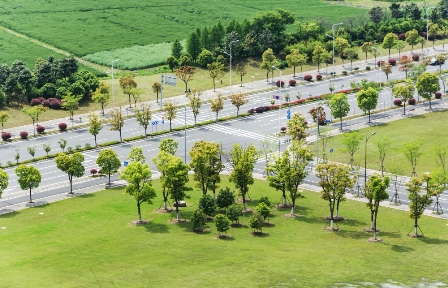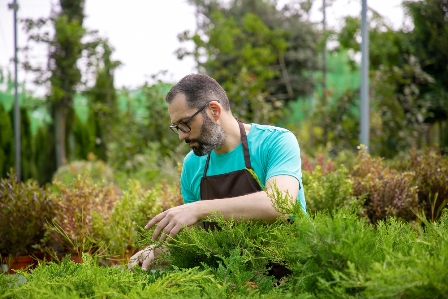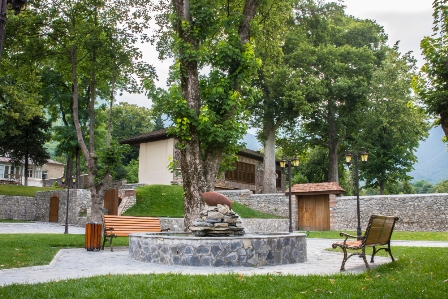Lush and beautiful landscapes have always been the envy of neighbors and the pride of homeowners. However, with the fast-paced nature of modern life, many people find it increasingly challenging to maintain these picturesque gardens. The solution to this predicament is a low-maintenance, high-impact landscape makeover.
Benefits of a Low-Maintenance Landscape
Gone are the days of spending endless hours weeding, mowing, and pruning. A low-maintenance landscape comes with several appealing benefits. Firstly, it saves you precious time. Instead of constantly toiling in your garden, you can enjoy it. Moreover, it’s also budget-friendly in the long run. Reduced maintenance means fewer expenses on equipment and labor.
Design Principles for a Low-Maintenance Landscape
Creating a low-maintenance landscape begins with a well-thought-out design. Here are some key principles to consider:
- Choose the Right Plants: Opt for native and drought-resistant plants that require minimal care and water.
- Mulching: Mulch helps retain moisture, suppress weeds, and adds a neat look to your garden.
- Hardscaping Elements: Incorporate hardscaping, like pathways, patios, and stone walls, to reduce the area that needs regular maintenance.
- Grouping Plants: Grouping plants with similar water and care requirements simplifies maintenance.
Sustainable Landscaping
Low-maintenance landscapes often overlap with sustainable landscaping. By using native plants and reducing water consumption, you’re not only making your life easier but also contributing to a more sustainable ecosystem.
Practical Tips for Maintenance
Maintaining a low-maintenance landscape doesn’t mean zero effort. However, you can significantly reduce the time and energy invested by following these practical tips:
- Regularly check for weeds and remove them before they take over.
- Prune and trim your plants when necessary, but select slow-growing varieties to minimize the frequency.
- Water deeply but infrequently to encourage deep root growth.
High-Impact Landscaping Ideas
Just because your landscape is low-maintenance doesn’t mean it can’t be visually stunning. Here are some ideas for achieving a high-impact landscape with minimal effort:
- Native Plants and Biodiversity: Use native plants to attract wildlife and promote biodiversity.
- Hardscaping and Outdoor Living: Create outdoor living spaces with patios, decks, and pergolas for a luxurious feel.
- Smart Water Management: Invest in irrigation systems with timers and moisture sensors.
Native Plants and Biodiversity
When choosing plants for your low-maintenance landscape, consider native species. Native plants are adapted to the local environment, which means they require less water, maintenance, and are more resistant to pests. They also support local wildlife, enhancing biodiversity in your area.
Hardscaping and Outdoor Living
Hardscaping elements, such as stone pathways, retaining walls, and outdoor kitchens, can add a touch of elegance to your landscape. They require minimal maintenance and can be designed to complement the natural beauty of your plants.
Smart Water Management
Efficient watering is crucial for a low-maintenance landscape. Drip irrigation systems, rain barrels, and smart timers can help you save water while keeping your plants healthy.
Budget-Friendly Makeover Ideas
Achieving a high-impact landscape doesn’t have to break the bank. Consider these budget-friendly ideas:
- DIY Projects: Get creative and take on some DIY projects, like building your flower beds or installing a small pond.
- Repurpose Materials: Use reclaimed materials for hardscaping or decorative elements.
- Plant Propagation: Grow new plants from cuttings or divisions of your existing plants to save money.
FAQs
A low-maintenance landscape saves time, money, and resources, making it an attractive choice for homeowners.
Native plants support local wildlife and enhance biodiversity by providing food and habitat for native species.
When designed and implemented thoughtfully, hardscaping elements can be environmentally friendly and complement the natural beauty of a landscape.
DIY projects, repurposing materials, and plant propagation are cost-effective ways to revamp your landscape.
Low-maintenance landscaping can be adapted to various climates by selecting the right plants and implementing efficient water management techniques.
Conclusion
A low-maintenance, high-impact landscape makeover is not just a dream; it’s a practical and sustainable choice. By following the principles of low-maintenance design, incorporating native plants, and making smart choices in hardscaping and water management, you can have a beautiful garden without the constant upkeep.





